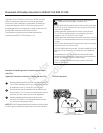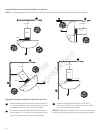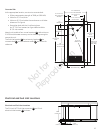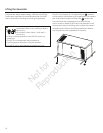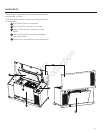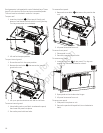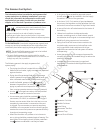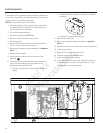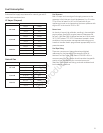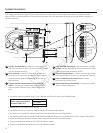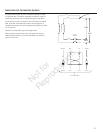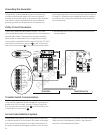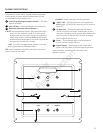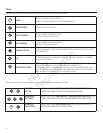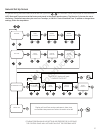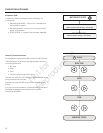
Not for
Reproduction
21
Fuel Consumption
Estimated fuel supply requirements for natural gas and LP
vapor fuels are shown here.
Fuel Pressure
Both LP vapor and natural gas fuel supply pressure at the
generator’s fuel inlet port should be between 5 to 11 inches
(13 to 28 cm) of water (in. W.C.) at full load with all gas
appliances turned on and operating. Maximum pressure with
engine OFF at No Load is 13.85 in. W.C.
Power Loss
Air density is less at high altitudes, resulting in less available
engine power. Specifically, engine power will decrease 3%
for each 1,000 feet (300 m) above sea level and 1% for each
10° F (5.6°C) above 77°F (25°C). Generators located in these
conditions, that use power management technology must
have their transfer switch programmed appropriately for this
power decrease.
Fuel Pipe Sizing
There are numerous on-line or otherwise-published
references for fuel pipe sizing. For example, NFPA 54 -
National Fuel Gas Code, 2006 (Item #: 320-6031-06) is a
common resource. The installer should consider the specific
gravity of gas, compensate for a nominal amount of
restriction from bends and fittings, and refer to federal and
local codes for guidance.
LP Vapor (Propane)
30 kW
Full Load
BTU/Hr 436800
Cu Ft/Hr 175
m³/Hr 5.0
Gal/Hr (liquid) 4.9
1/2 Load
BTU/Hr 287400
Cu Ft/Hr 115
m³/Hr 3.3
Gal/Hr (liquid) 3.2
Exercise
BTU/Hr 138000
Cu Ft/Hr 55
m³/Hr 1.6
Gal/Hr (liquid) 1.5
Natural Gas
30 kW
Full Load
BTU / Hr 414500
Cu Ft/ Hr 415
m³/Hr 11.7
1/2 Load
BTU / Hr 275400
Cu Ft/ Hr 275
m³/Hr 7.8
Exercise
BTU / Hr 136200
Cu Ft/ Hr 136
m³/Hr 3.9



